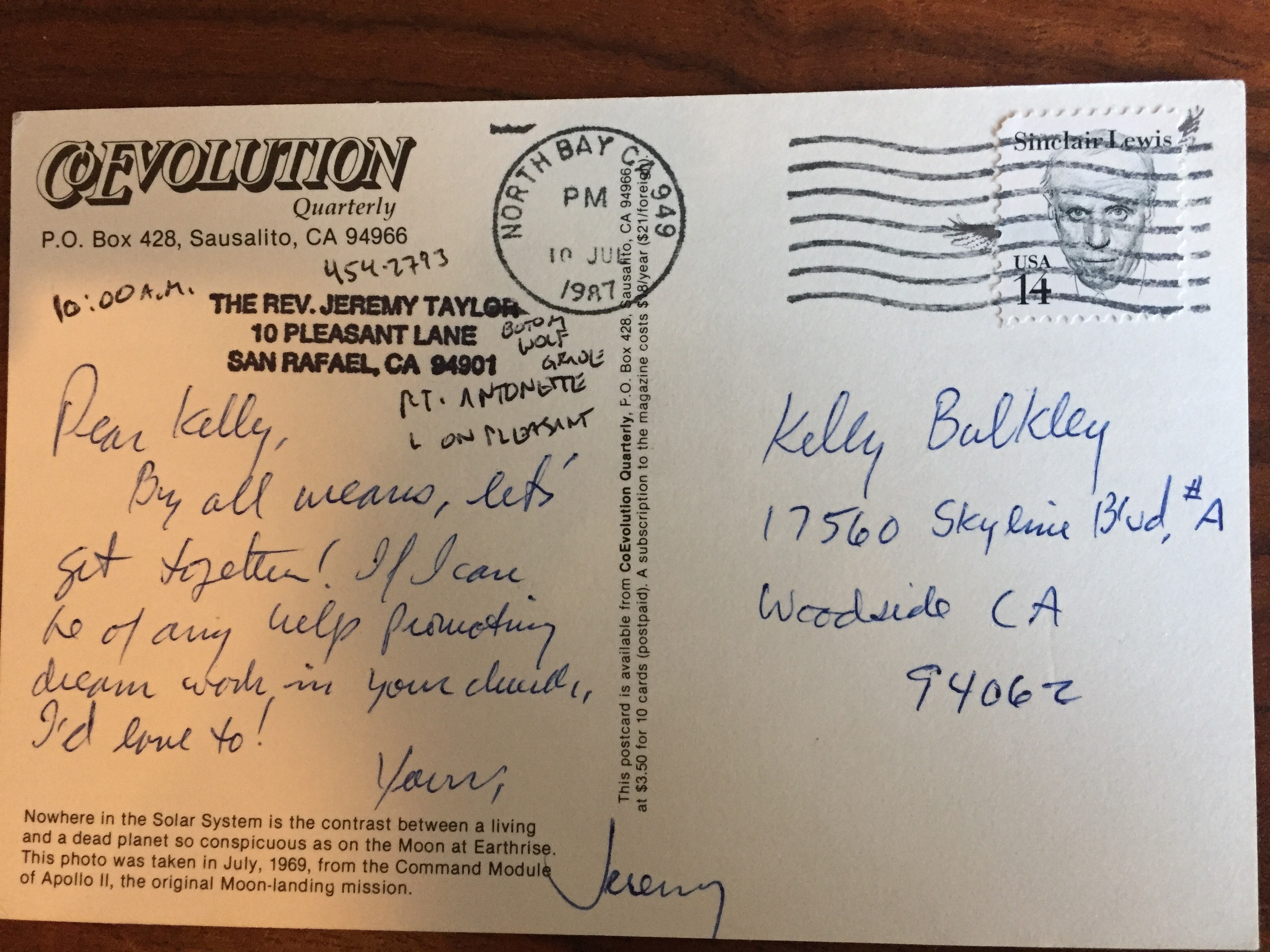 When someone is about to share a dream with me, either in a group setting or one-on-one, I always ask for two things. First, please tell the dream in the present tense, not the past tense, so the dream feels immediate, like it’s happening right now. And second, please share the dream twice. After you have told it once, tell the whole thing again.
When someone is about to share a dream with me, either in a group setting or one-on-one, I always ask for two things. First, please tell the dream in the present tense, not the past tense, so the dream feels immediate, like it’s happening right now. And second, please share the dream twice. After you have told it once, tell the whole thing again.
Most people are fine with the first request. It’s pretty easy to notice the difference between past vs. present tense, and to appreciate the benefits of the latter. Compare “I walked on a beach where birds were flying and saw my friend” with “I walk on a beach where birds are flying and see my friend”—the present tense brings the action of the dream right into the here-and-now, which is a big goal in my way of working with dreams (influenced by Jeremy Taylor and Montague Ullman). If the dream is a terrifying nightmare, it might be more comfortable for the dreamer to use the past tense, to maintain a healthy distance from the anxious feelings. But in almost all other circumstances, the use of the present tense in sharing a dream has enormous benefits in terms of improving the empathetic quality of the ensuing discussion.
The second request is a harder sell. After someone tells me a dream, they are usually eager to hear my response. Especially if the dream is a long and intricate one, the dreamer is probably relieved to have reached the end of the narration. It takes real energy to share a dream in full detail with someone else, a real commitment to personal self-revelation. And what do I say at this moment? “Thanks, now would you please tell it again? From the start?”
Almost always, there’s a brief flash of disappointment when I ask this. The dreamer’s face falls a little bit, and they might even say “Really? You want me to repeat the whole thing?” They don’t say it, but I know they’re thinking, “Hello? Did you not hear the words that were coming out of my mouth?” When I shrug and say I know it seems awkward, but please, I’d appreciate it, the dreamer usually takes a deep breath and starts again, with a slightly put-upon tone of voice, and none of the gusto from the first telling.
And then a few seconds in, their tone of voice changes. We’re back in the dream again, and now the dreamer’s interest in what’s happening grows beyond what arose in the first telling. New features and elements emerge, as the dreamer focuses more on qualities of the experiential space within the dream, and less on making sure to give an accurate narration of the beginning, middle, and end of the dream. By the time the dreamer has finished with the second telling, we are fully immersed in that dream space, and ready for a deeply reflective conversation about its possible meanings.
Telling the dream twice at the outset of a dream-sharing process has at least two specific benefits. First is the surprising appearance of new details. The second telling inevitably differs in various ways from the first telling, and these differences can be a source of fruitful exploration. To be clear, this is not meant to be a “gotcha!” game to challenge the dreamer’s memory. Rather, it’s a way of allowing the dreamer to re-enter the dream space as fully as possible, and thus better able to describe the multi-sensory complexities of that environment.
The second benefit of the re-telling is helping to develop what I think of as a “holistic awareness” of the dream. The first time I hear someone else’s dream, it’s a journey of total surprise and discovery. I have no idea what’s coming next. I’m trying to listen carefully to the dreamer, notice and remember each detail, and keep up with the narration. The second time I hear the dream I already know what’s going to happen, so when the dreamer begins the description, I can now appreciate each detail in the context of the whole. Dreams rarely take the form of simple linear narratives. More often, they have multiple dimensions of activity and awareness, mixing up the conventional elements of story-telling. Things can happen out of chronological order, or in weird patterns of simultaneity. The first telling of the dream inevitably squeezes all of that into a single form, while the second telling enables each detail of the dream to be appreciated within a holistic awareness of the dream in its entirety.
None of this guarantees that important meanings will emerge from the discussion. But if you start a dream-sharing process by following these two principles—tell the dream in the present tense, twice—you will be in the best position to hear whatever potentially valuable meanings the dream may be expressing.
Note: this post first appeared in Psychology Today, April 19, 2021.

 The world’s biggest yearly gathering of dream researchers, teachers, artists, and therapists is less than two weeks away.
The world’s biggest yearly gathering of dream researchers, teachers, artists, and therapists is less than two weeks away. Following the death a few weeks ago of Jeremy Taylor and his wife Kathy, I spoke with their daughter Tristy, and we agreed that I would take responsibility for moving, storing, and preserving his professional books and papers. Tristy understands that her father had a major influence on the contemporary study of dreams, and his works will have an enduring historical significance for the field. I told her that my wife and I have recently begun working with an architect to design a study and library devoted to dream research on property we own near Portland, so I can offer a place where his collection will be available to other dream investigators in the future.
Following the death a few weeks ago of Jeremy Taylor and his wife Kathy, I spoke with their daughter Tristy, and we agreed that I would take responsibility for moving, storing, and preserving his professional books and papers. Tristy understands that her father had a major influence on the contemporary study of dreams, and his works will have an enduring historical significance for the field. I told her that my wife and I have recently begun working with an architect to design a study and library devoted to dream research on property we own near Portland, so I can offer a place where his collection will be available to other dream investigators in the future.
 The Rev. Jeremy Taylor was one of the most prolific dream speakers and teachers of modern times. He traveled to every corner of the U.S., and to many countries around the world, reaching out to people and promoting greater awareness of dreaming. He combined his background as a Unitarian-Universalist minister with a deep familiarity with Jungian archetypal psychology to not only help people better understand their dreams, but to get them excited and energized about the amazing adventure of psychological growth and spiritual discovery that opens up once they start paying more attention to general human experience of dreaming.
The Rev. Jeremy Taylor was one of the most prolific dream speakers and teachers of modern times. He traveled to every corner of the U.S., and to many countries around the world, reaching out to people and promoting greater awareness of dreaming. He combined his background as a Unitarian-Universalist minister with a deep familiarity with Jungian archetypal psychology to not only help people better understand their dreams, but to get them excited and energized about the amazing adventure of psychological growth and spiritual discovery that opens up once they start paying more attention to general human experience of dreaming.


